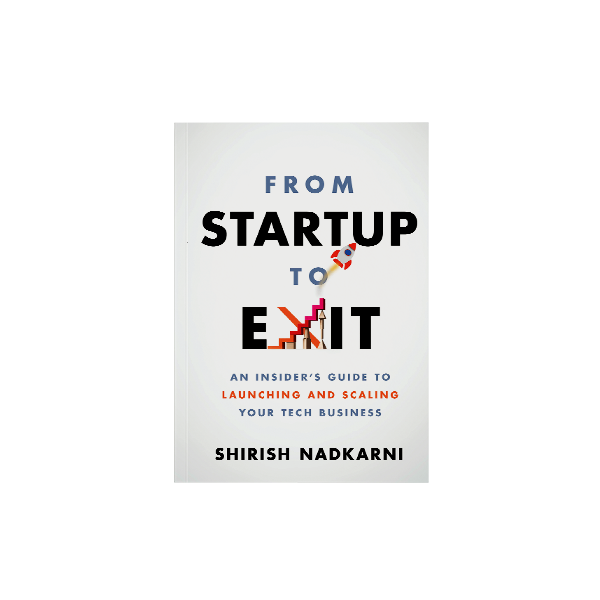You think you have come up with a brilliant idea for your startup. You have spoken to your friends and colleagues, and they think that the idea has merit. You have even done the preliminary market research and spoken to many potential customers, and feedback has been positive.
But how do you really know that it will form the basis for a great company? Figuring this out is no easy task. After all, VCs are paid millions of dollars in management fees, and even then, for the most successful investors, only one out of ten picks is a major hit.
To consider whether a startup idea has the potential to become a major hit, it is important to consider the idea from a number of different strategic perspectives discussed below.
Incumbents are hard to beat on their own turf
Most markets you will target will have existing players and market leaders that have been around for years. Incumbents are extremely hard to beat unless there is a major transformation in the industry that you can exploit first. Incumbents typically have a strong industry reputation, a host of features, a fine-tuned sales engine, and customer lock-ins that make it difficult for customers to consider a new player in the market.
Everyone today is familiar with the success of Microsoft Office. What people don’t know is how difficult it was for Microsoft to gain a leadership position in the office productivity space before Windows became a popular platform.
Before the advent of Windows, WordPerfect and Lotus 1-2-3 were the de facto market leaders on the MS-DOS operating system. Microsoft had its own MS-DOS-based offerings called Microsoft Word and Microsoft Multiplan. However, Microsoft had very little success beating WordPerfect and Lotus 1-2-3. Users were just too used to the keystroke-based user interfaces of WordPerfect and Lotus 1-2-3 and were locked into the macros that they had created in Lotus 1-2-3.
Once Windows 3.0 came on the scene in 1990 and started becoming popular, things shifted in Microsoft’s favor. WordPerfect and Lotus made the mistake of simply porting their applications from MS-DOS to Windows, which meant that the applications didn’t perform well on Windows. Not surprisingly, Microsoft built new word processing and spreadsheet apps from the ground up and designed the applications to take advantage of the capabilities offered by Windows. Next, Microsoft made the brilliant move to package these applications along with Microsoft PowerPoint into a bundle called Microsoft Office and made it cheaper than purchasing each application individually.
Over time, Microsoft made sure that all the applications had consistent user interfaces and that it was easy to share data across these applications. It was no surprise that, as Windows became more popular, the market share leadership shifted to Microsoft Office as users wanted the best and most comprehensive suite of applications for Windows.
Global industry transformations
The best opportunities for disruption happen when the industry you are targeting is undergoing a dramatic transformation. At that time, incumbents are typically slow to move because they have existing investments and business models that they are unwilling to disrupt.
Microsoft, for example, failed to recognize how its hold on the PC industry would be disrupted first by the internet and later by mobile devices. It took a very expensive acquisition of Hotmail for Microsoft to get into the game with MSN.com, and it was soon eclipsed again by major players like Google and Facebook.
On the mobile front, Microsoft invested initially in its Pocket PC platform but failed to see the shift to mobile by early players like Research In Motion (RIM) with its iconic BlackBerry device. Later, Apple and Android completely upended the mobile market with their touch-based interfaces and application platforms. By the time that Windows mobile came on the scene, it was too late for Microsoft, and it never got beyond a 1 to 2% market share in the mobile market.
When I launched Livemocha, a social language learning platform, the entire world was going through a globalization phenomenon with dramatic outsourcing of manufacturing and knowledge worker jobs. Global trade was also showing significant growth as tariffs and trade barriers were coming down. Worldwide travel between various regions was increasing significantly as employees at multinational corporations had to travel internationally to coordinate their activities with their employees, customers, and vendors. These transformations were all responsible for the significant interest in foreign language learning, especially English, throughout the world. Not surprisingly, Livemocha rapidly grew to 15 million members in 200 different countries.
Technology platform shifts
Over the last three decades, we have seen new technology platforms emerge that have created tremendous opportunities for startups. We had the emergence of the PC platform in the 80s, followed by the internet platform in the 90s. Finally, mobile emerged as the broadest platform for computing in the early 2000s, enabling more than 4.5 billion users worldwide to gain access to the internet.
Each of these new technology platforms has allowed a whole new generation of companies to emerge and become massive players in the industry. Microsoft rode the PC platform wave, followed by Google and Amazon, which rode the internet wave, and, finally, Facebook and Apple rode the move to mobile.
A number of new companies emerged that disrupted existing market leaders that did not adapt fast enough to the emerging new platforms. Amazon disrupted Barnes & Noble before becoming a general purpose e-commerce platform. Netflix disrupted Blockbuster, and now it is disrupting traditional cable companies, which are losing subscribers by the millions as they cut the cord. In fact, neither of my adult kids has a cable TV subscription. Instead, they rely on Netflix, Amazon Prime, and Hulu to access made-for-TV content.
Over the last few years, we are seeing a significant opportunity for new startup creation with the emergence of artificial intelligence and machine learning (AI/ML) technology. The advent of cheap GPU-based computing power and AI/ML services offered by all the major cloud providers like Amazon Web Services, Microsoft Azure, and Google Cloud Platform has enabled a whole new generation of AI/ML-based startups to emerge and disrupt existing players in their market. Startups need access to a large amount of labeled data to build machine learning models that make useful predictions for specific use cases. The most successful startups are the ones that have gained early access to proprietary data that they can utilize to fine-tune their models.
If you liked this article, you can learn more by reading my book From Startup to Exit – An insider’s guide to launching and scaling your tech business.

